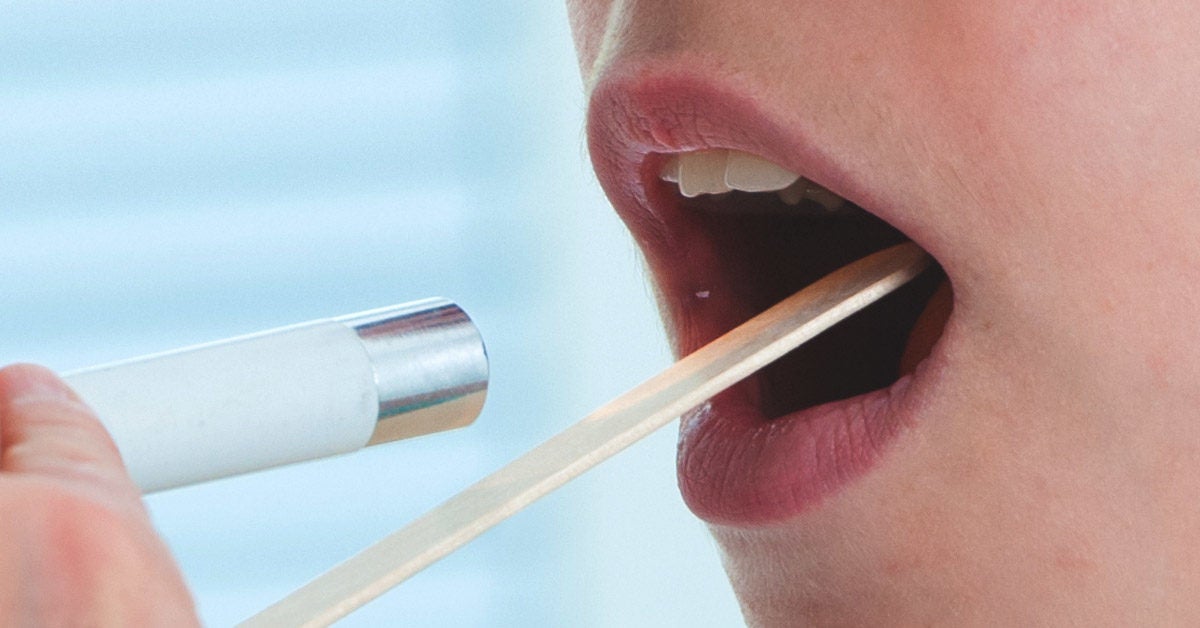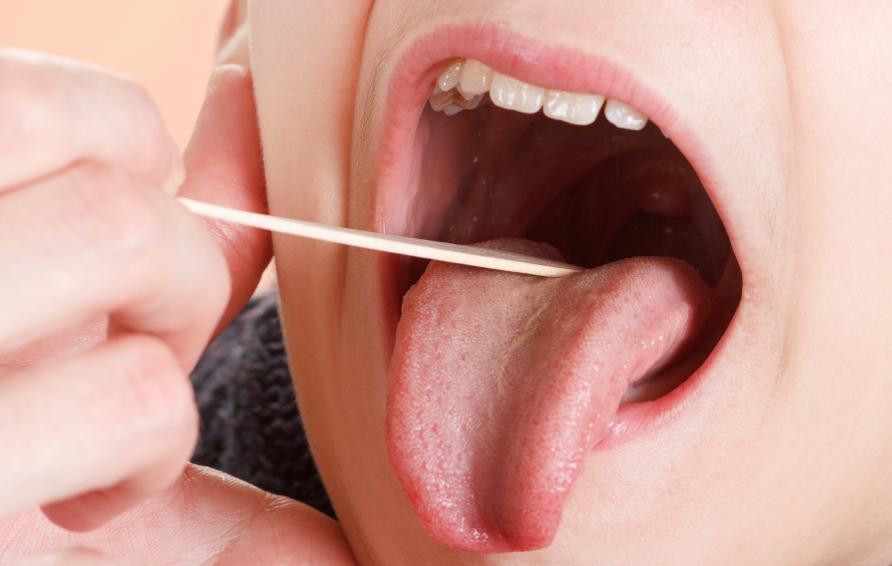Can Tonsils Grow Back After Being Removed?

Can Tonsils Come Back After Being Removed?
The question “Can tonsils come back after being removed?” often arises among individuals who have undergone tonsillectomy surgery.
Yes, tonsils can partially regrow after a tonsillectomy. While not common, this can happen if some tonsil tissue is left behind during the surgery. This regrowth typically isn’t complete and usually doesn’t cause the same problems as the original tonsils.

Quick Summary of the Article:
| Aspect | Details |
| Can Tonsils Come Back After Being Removed? | Yes, particularly if some tissue remains post-surgery. It’s rare but possible. |
| Understanding Regrowth | Factors like residual tissue, age at tonsillectomy, and surgical technique influence regrowth. |
| Identifying Regrowth | Signs include persistent sore throat, difficulty swallowing, and recurrent sleep apnea symptoms. |
| Who Might Need a Second Surgery? | Mostly young children or those with significant regrowth causing symptoms. |
| Diagnosing Regrowth | Through physical exams, imaging tests, and differential diagnosis to rule out other conditions. |
| Treatment Options | Observation for minor cases, or minimally invasive techniques (Coblation, Laser ablation, Radiofrequency ablation) for significant regrowth. |
| Post-Operative Care | Emphasizes rest, gentle diet, and follow-up visits for healing and monitoring. |
| Prognosis and Quality of Life | Most people experience symptom improvement, with regrowth being a rare occurrence. |
| Future of Treatment | Ongoing research aims to refine surgical techniques and understand regrowth better, promising personalized and effective treatments. |
What You Need to Know About Tonsil Regrowth
Tonsil regrowth is rare but possible, especially in children and depending on the surgical method used. Understanding this possibility is crucial for anyone who has had or is considering a tonsillectomy.
/arc-anglerfish-arc2-prod-pmn.s3.amazonaws.com/public/E4PSHTP76NBJBA7UX2V57UU6NM.jpg)
| Aspect | Importance |
| Informed Decision-Making | Knowing about the potential for tonsil regrowth helps in making an informed decision about undergoing a tonsillectomy for conditions like chronic tonsillitis or sleep apnea. |
| Managing Expectations | Awareness of the likelihood and characteristics of tonsil regrowth can help manage expectations post-surgery, reducing anxiety about the possibility of recurrence. |
| Early Detection and Management | Recognizing signs of regrowth early on allows for timely intervention, minimizing discomfort and ensuring better outcomes if regrowth does occur and causes problems. |
Why Does Tonsil Regrowth Happen?
Even with the best surgical techniques, tonsil regrowth can occur in some cases.
Lemme tell you that why it might occur and how often it actually happens.
What Causes Tonsils to Grow Back?
These are the following reasons that can explain why some people might see their tonsils making a comeback.
- Residual Lymphoid Tissue: Sometimes, not all the tonsil tissue gets removed during surgery. This leftover bit can grow.
- Age at Tonsillectomy: Younger kids might have a higher chance of regrowth because their bodies are still growing, including any remaining tonsil tissue.
- Surgical Technique: How the doctor takes out the tonsils can affect if they grow back or not.
- Extracapsular Tonsillectomy: This modern way tries to take out all the tonsil, leaving behind less tissue that could regrow.
- Intracapsular Tonsillectomy: The older method takes out most of the tonsil but may leave some behind, which could grow back, but it’s still better than leaving troubled tonsils untreated.
How Often Do Tonsils Regrow?
It’s pretty rare for tonsils to regrow after they’ve been taken out. Most people never have to worry about it. But, for those curious about the numbers, let’s break it down:
- Very Rare: Serious regrowth that needs another surgery, that’s extremely rare.
- Minor Regrowth: Tiny bits of tissue might come back in some folks, but it usually doesn’t cause any trouble or need more treatment.
How to identify that my tonsils are regrowing?

Even though tonsils are removed during surgery, sometimes they can grow back a little. This doesn’t usually cause any problems, but in some cases, it might.
Here are some signs to watch for that could indicate tonsil regrowth:
Signs and Symptoms to Watch For
If you’re thinking about the symptoms of tonsil regrowth, keep an eye out for these clues:
- Persistent Sore Throat: A sore throat that just won’t go away, even after weeks or if it keeps coming back, could be a sign of regrown tonsil tissue.
- Difficulty Swallowing: If you feel like it’s hard to swallow your food or drinks, and it wasn’t a problem before your tonsillectomy, it might be because some tonsil tissue has grown back and is blocking your throat a little.
- Recurrent Sleep Apnea Symptoms: If you had sleep apnea before your tonsillectomy and you start snoring loudly again, or wake up gasping for air at night, it’s possible that regrown tonsil tissue is blocking your airway again.
Who Might Need Their Tonsils Removed Again?
Tonsillectomy is a highly effective procedure, in some rare cases, a second surgery might be necessary.
Here’s who’s more likely to be in that boat:
- Kids Who Had Early Surgery: Little ones who got their tonsils out super young might see them peek back.
- Those with Recurring Symptoms: If sore throats, trouble swallowing, or sleep apnea symptoms come back and stick around, it might be time for another chat with the doctor.
- Patients with Partial Regrowth: If there’s enough regrowth causing problems, a second surgery could be the fix.
- Significant Regrowth Causing Problems: Sometimes, tonsils grow back big enough to cause issues like sore throats, hard swallowing, or snoring badly again. If it’s messing with everyday life, a doctor might suggest taking them out again.
- Incomplete Removal During Initial Surgery: Once in a while, the first surgery might miss some tonsil bits. If left behind parts cause trouble, a second surgery could be needed to get rid of them for good.
Diagnosing Tonsil Regrowth
Some stubborn tonsil tissue might grow back after surgery, there’s no need to worry unless it starts causing problems. But how do doctors know if your tonsils have grown back a little?
Here’s what they might do to check:
How Doctors Spot Regrowth
Doctors have a few tricks up their sleeves to check if tonsils are growing back.
- Physical Examination: The doc takes a look inside your throat to see if there’s any new tonsil tissue.
- Imaging Tests (if needed): Sometimes, a closer look with special scans like X-rays helps spot any regrown tonsils.
- Differential Diagnosis: The doctor also checks to make sure it’s not something else causing the same kind of trouble as regrown tonsils.
Treatment Options for Regrowth
The good thing is that minor regrowth often doesn’t require any treatment at all.
Here’s what your doctor might recommend:
- Observation (for minor regrowth): If it’s just a little bit of tissue and not causing any trouble, doctors might just keep an eye on it instead of jumping into more treatment.
- Minimally Invasive Ablation Techniques: For more serious regrowth, there are some pretty cool, less intense ways to take care of it.
- Coblation: This uses radiofrequency energy to gently remove the regrown tissue with minimal bleeding and scarring.
- Laser Ablation: A laser beam precisely targets and destroys the regrown tissue.
- Radiofrequency Ablation: Similar to coblation, radiofrequency waves are used to heat and ablate the regrown tonsil tissue.
- Coblation: This uses radiofrequency energy to gently remove the regrown tissue with minimal bleeding and scarring.
Post-operative Care and Follow-Up
After getting those regrown tonsils treated, here’s how to keep things on track, and care for your throat:
- Rest and Recovery: Take it easy and give your body time to heal. That means plenty of rest and maybe some time off from work or school.
- Pain Management: Your doctor will prescribe medication to manage any discomfort after the procedure.
- Eating and Drinking: Start with soft, easy-to-swallow foods and plenty of fluids. Ice cream isn’t just allowed; it’s recommended!
- Follow-Up Appointments: Regular follow-up appointments allow your doctor to monitor healing and address any potential complications.
- Long-Term Considerations After Tonsillectomy
Impact of Tonsillectomy on Immunity
- Tonsils play a role in the immune system, especially during childhood. However, most adults experience no significant change in their immune function after a tonsillectomy.
- The body adapts and continues to fight infection effectively through other parts of the lymphatic system.
Prognosis and Quality of Life
After a tonsillectomy, and maybe even a touch-up for regrowth, here’s what to expect for your health:
- Feeling Better: Most folks see a big improvement in their symptoms, whether that was sore throats, snoring, or sleep trouble, leading to better days and restful nights.
- Rare Regrowth: Remember, tonsil regrowth is pretty rare, so chances are you won’t have to go through this again.
- Stay on Top of Health: Keep up with regular doctor visits to catch any changes early and keep those tonsils in check for a happier, healthier you.
Advancing Understanding and Treatment
Science and medicine never stop moving forward, especially when it comes to taking care of our health. Here’s a look into what we might expect from the future progress of health sciences:
The Future of Tonsillectomy and Regrowth Management
- Better Techniques: Researchers are always on the hunt for new ways to remove tonsils that lower the chances of them growing back.
- New Discoveries: As we learn more about why tonsils regrow for some people, we’ll get better at stopping it before it starts.
- Custom Care: The goal is to tailor tonsil treatment more closely to each person’s needs, making sure everyone gets the best outcome possible.
Conclusion
Tonsil regrowth after surgery is possible, but often minor and treatable. Your age at the time of surgery, the surgical technique, and residual tissue of tonsils all influence the regrowth risk. Symptoms like sore throat or swallowing problems might indicate regrowth. Early diagnosis and treatment are key. Treatment options vary depending on severity; observation or minimally invasive ablation might be used. Proper post-operative care is crucial.
FAQs
- Can adults experience tonsil regrowth, or is it just a kid thing?
Adults can experience regrowth, but it’s more common in children due to the way tonsils heal and regrow at younger ages. - Does tonsil regrowth mean the original surgery was a failure?
Not necessarily. The surgery can still relieve symptoms and improve quality of life, even if some tissue regrows. - Are there any home remedies to prevent tonsil regrowth?
No home remedies can prevent regrowth. Focus on overall throat health and follow your doctor’s advice post-surgery. - If my tonsils regrow, will I have the same symptoms as before?
You might have similar symptoms, but they’re often less severe due to the regrowth usually being partial. - How quickly can tonsils regrow after being removed?
It varies, but regrowth typically takes months to years, if it happens at all. - Can regrown tonsils be removed with the same technique as the first surgery?
Yes, but your doctor might recommend a different technique based on the extent of regrowth and your previous experience. - How can I tell the difference between normal throat pain and pain from regrown tonsils?
Persistent or recurring throat pain after a tonsillectomy, especially with other symptoms like difficulty swallowing, might indicate regrowth. A doctor’s evaluation is the best way to tell. - Is tonsil regrowth painful?
Not necessarily. Minor regrowth often causes no discomfort. Significant regrowth might cause a sore throat or difficulty swallowing. - Can I feel tonsil regrowth?
No, you typically can’t feel tonsil tissue directly. However, you might experience symptoms like a sore throat or trouble swallowing if the regrowth is large enough. - What can I do to prevent tonsil regrowth?
There’s no guaranteed way to prevent regrowth. However, maintaining good oral hygiene and managing allergies (if present) might help reduce the risk of throat infections, which could contribute to regrowth. - Is tonsillectomy still a good option if there’s a chance of regrowth?
Yes. Tonsillectomy remains very effective for treating chronic tonsillitis and sleep apnea. Even with potential regrowth, most cases are easily managed. - Are there any natural remedies that can help with tonsil regrowth?
There’s no scientific evidence that any natural remedies can treat tonsil regrowth. However, gargling with warm salt water might soothe a sore throat caused by regrowth. - How long does it take to recover from a procedure to remove regrown tonsil tissue?
Recovery from minimally invasive ablation techniques for regrowth is typically much faster than a traditional tonsillectomy, often taking just a few days.



